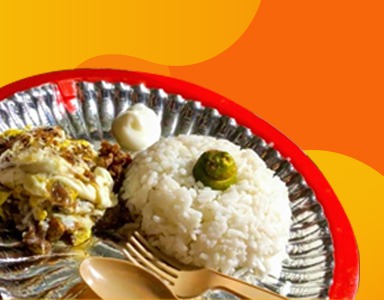
Working in the Philippines’ business hotspot in Makati, jumping from meetings to client calls, does take a toll on you. Amidst the killer deadlines you have to meet and the day’s agenda you have to deal with, at some point, you will inevitably pose the most important question of the day.
What’s for lunch?
Charlotte Reyes, Comm&Sense’s managing director, and resident foodie has been craving for days for some greasy and decadent sisig. For the uninitiated, sisig is a Filipino dish that’s typically made from parts of a pig’s head and liver and seasoned with local lemon and spices.
The craving also grew on me, so I decided to do a quick Google on sisig joints in Makati. The search yielded the usual suspects: Spot.ph came out with two sets of reviews on the best sisig in Metro Manila. The food blog dessertcomesfirst.com also provided a piece on where to find the best sisig.
The articles were awesome and helpful. But what really piqued my interest in the comments section. In both blog posts, a couple or so readers would passionately question the reviews. The best sisig in Manila, commenters rabidly wrote, are not in the fancy restaurants the mentioned in spot and dessertcomesfirst; it’s actually in a lowly rolling food cart we fondly call the Jolli-Jeep along Rada St. in Makati.
For the love of sisig, I took my curiosity to Twitter to investigate if the comments were genuine. Searching for keywords “sisig” and “Rada” yielded these results:
Ang pinakamasarap na sisig sa buong mundo #taralunch #sisigrada http://t.co/vExcPEvJDw — M♥N (@moniqueph25) March 28, 2014
busog na ako, pero natakam ako sa pic ni kapatid jovefrancisco sa Sisig ng Rada. napakain ulit 🙂 http://t.co/rGnwbKsLEX — Reggie Ramos (@dronthego) March 25, 2014
At dahil nasa Rada St kami kanina, syempre nag jollyjeep kami para muling matikman ang best sisig in… http://t.co/Ew1joTRrpo — Jove Francisco (@jovefrancisco) March 19, 2014
and agaaaaain!! (@ Sisig Sa Rada) http://t.co/XH3pBtCPL7 — Karmela Abustan (@kkllaanngg) February 25, 2014
Magnum Gold while waiting for our Rada Sisig!!! @ Rada Street http://t.co/quartLqKsc — Arvin Ace I. Ritualo (@arvinritualo) February 11, 2014
Foursquare also showed more than 300 check-ins for Rada Street and leading the list of tips was the famous jolli-jeep sisig there. I was convinced. I asked Charlotte to cough up P50 for her order and I made the 200-meter walk to Rada. Lo and behold, this is the sight that greeted me:
It’s like bizarre a soup kitchen for corporate people.
I casually placed my order, thinking I could get my food packed in a jiff. But fate would have it the other way. I was in fact 16th in the queue. Long story short, I had to wait 30 minutes before I can go back to the office and enjoy my sisig.
You gotta love all that grease
But this is not a food review. I don’t intend to write about how the sisig tasted. You will have to take your own 30-minute wait to find out for yourself.
This is, in fact, a piece about marketing, and my sisig experience perfectly demonstrates what paid, owned, and earned media is all about. Understanding how this works is vital for any content marketer who wants to build a solid reputation for their brands.
First, there is the paid media – the most obvious and often the most notorious platform of all. This is the media that traditional marketing people love to go to whenever they want to get the word out. Paid media is the process of peddling content thru print, broadcast ads, and even online ads. Paid media has an inherent advantage of getting the brand’s message out fast because you pay a readily available medium, like newspapers and TV shows, to hostage people into learning more about your product. It’s also expensive and recent studies show that people have already learned to shut out and ignore content via paid media.
Then there are the owned media. This represents pieces of content that brands produce and syndicate in their websites, as well as corporate Facebook, Twitter, and other social media accounts. Unlike paid media, owned media is cheaper to produce because there’s no need to pay for third party channels to carry your message. Owned media, if done with a correct set of content marketing tactics, also tend to be more trustworthy. It’s also effective in building your own set of followers and communities, so you can turn them into patrons and advocates of our brand.
Earned media is an offshoot of your paid and earned media efforts. These are pieces of content that third parties produce to describe your brand. They come as tweets, Facebook updates from personal profiles, forum comments, blog posts that, in theory, tell about your brand without you paying for their content. Earned media is where word of mouth marketing takes shape.
In the old days, PR and advertising agencies used to fabricate earned media by asking journalists and bloggers to write about their brand. However, poor writing (that’s my theory) and the excessive need for branding, have taught people to distinguish the difference between a paid or fabricated content and a genuinely objective article.
And objectivity is the mother of trust. That is why among the three, earned media is king. By force of the accident, this is the same content that the sisig in Rada has produced online.
This is the same reason why some of the most established restaurants in Makati painfully wait for customers, while this Jolli-Jeep has the luxury of making customers wait for 30 minutes to get their sisig.
NOTE: This article originally appeared here.

















